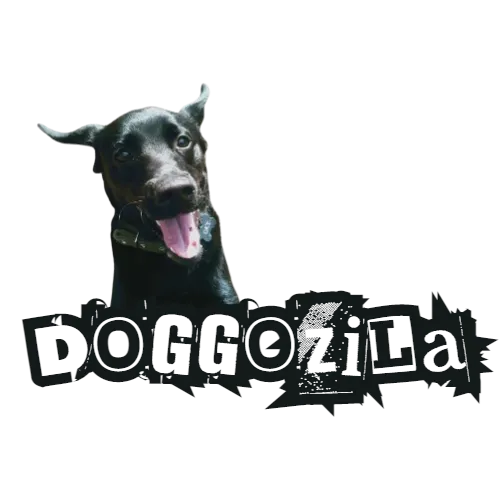Dog Chew Bones - Doggozila Magazine
584 views
Oct 24, 2024
CHEWING ON BONES IS SOMETHING THAT DOGS ENJOY AND IS A NATURAL BEHAVIOR FOR THEM. IT NOT ONLY KEEPS THEM ENTERTAINED BUT ALSO HAS SEVERAL BENEFITS. Read more at: https://doggozila.com/dog-chew-bones/
View Video Transcript
0:00
Dog chew bones, benefits, risks and tips
0:12
Published by Dogazilla. Chewing on bones is something that dogs enjoy and is a natural behavior for them
0:19
It not only keeps them entertained but also has several benefits. Learn more about dog chew bones below
0:25
Dog chew bones promote dental health. Dental dog health Chewing on bones can help clean your dog's teeth and gums, remove plaque and tartar, prevent bad breath, and strengthen their jaw muscles
0:37
Chewing on bones can also satisfy your dog's urge to chew and prevent them from chewing on inappropriate items, such as furniture, shoes, or wires
0:45
Dog nutrition Bones are a good source of minerals and other nutrients for your dog, such as calcium, phosphorus, magnesium, iron, zinc, and collagen
0:56
These nutrients can support your dog's bone health, immune, system, blood clotting, and wound healing. Bones also contain marrow, which is rich in fat and
1:05
protein and can provide your dog with extra energy and calories Dog mental stimulation Chewing on bones can keep your dog mentally stimulated and entertained especially when they are bored or stressed Chewing on bones can also release endorphins which are natural
1:20
chemicals that make your dog feel happy and relaxed. The act of gnawing on bones can help remove
1:25
tartar and plaque buildup, thus preventing dental issues such as gum disease and tooth decay. Additionally
1:32
chewing on bones can help relieve boredom and stress in dogs, providing them with mental
1:36
stimulation. It also helps exercise their jaws and neck muscles, contributing to their overall
1:41
physical well-being. However, it's important to choose appropriate bones for your dog to chew on
1:47
such as raw bones or specially designed chew toys, to ensure their safety and avoid any potential
1:52
hazards. Dog chew bones risks. Dog choking. Bones can break into small pieces or splinters
1:59
that can get stuck in your dog's throat or digestive tract, causing choking, gagging, vomiting, or
2:04
obstruction. This can be life-breddening and require emergency veterinary care. Dog infection
2:10
Bones can harbor bacteria, such as salmonella or E. coli, that can cause infection in your
2:16
dog or yourself. This can lead to diarrhea, fever, dehydration, or septicemia, blood poisoning
2:23
You should always wash your hands after handling bones and keep them away from children or other pets Dog injury Bones can be hard and sharp and can damage your dog teeth gums tongue or mouth
2:35
They can also cause fractures or perforations in your dog's esophagus, stomach, or intestines
2:40
This can result in bleeding, inflammation, infection, or peritonitis, inflammation of the abdominal cavity
2:47
You should always monitor your dog when they are chewing on bones and check their mouth for any signs of injury
2:53
Minimize all risks and maximize the body. benefits of dog chew bones for your dog. Choose the right type of dog chew Trues. Not all bones
3:01
are suitable for dogs. You should avoid cooked bones of any kind, e.g. chicken bones. They are more
3:07
brittle and prone to splintering. You should also avoid bones that are too small, e.g. fish bones
3:12
too large, e.g. cow femur, too hard, e.g., weight-bearing bones, or too soft, e.g.
3:19
pork ribs, for your dog. You should opt for raw meaty bones that are appropriate for your dog's
3:24
size, breed, age, and chewing style. For example, you can give your dog raw beef knuckle bones
3:30
lamb neck bones, or turkey neck bones. Choose the right frequency and duration. You should not
3:37
give your dog bones every day This can cause nutritional imbalance obesity or constipation You should limit your dog bone intake to once or twice a week Only for 15 to 20 minutes at a time You should also take the bone away from your dog when they are
3:50
done chewing or when it becomes too small or sharp. You should store the bone in the refrigerator
3:55
and discard it after three or four days. Choose the right place and time. You should give your
4:01
dog bones in a safe and comfortable place. This could be a crate, a mat, or a designated
4:06
chewing area. You should avoid giving your dog bones on carpet. furniture, or beds. As they can stain or damage them, you should also avoid giving your dog bones
4:15
before or after meals, as this can cause digestive problems or bloat. You should give your dog bones
4:21
when they are calm and relaxed, not when they are hungry, excited, or stressed. Choose the right
4:27
supervision and care. You should always supervise your dog when they are chewing on bones. Make sure
4:32
they have access to fresh water. You should watch for any signs of choking, gagging, vomiting, diarrhea, bleeding, or discreet
4:39
comfort and seek veterinary attention immediately if you notice any problems. You should also check your dog's mouth regularly for any signs of injury, infection, or
4:48
dental disease and consult your veterinarian if you have any concerns. Dog chew bones can be a great treat for your dog
4:55
They can provide them with many benefits for their dental health, nutrition, and mental stimulation
#Dogs
#Pets

